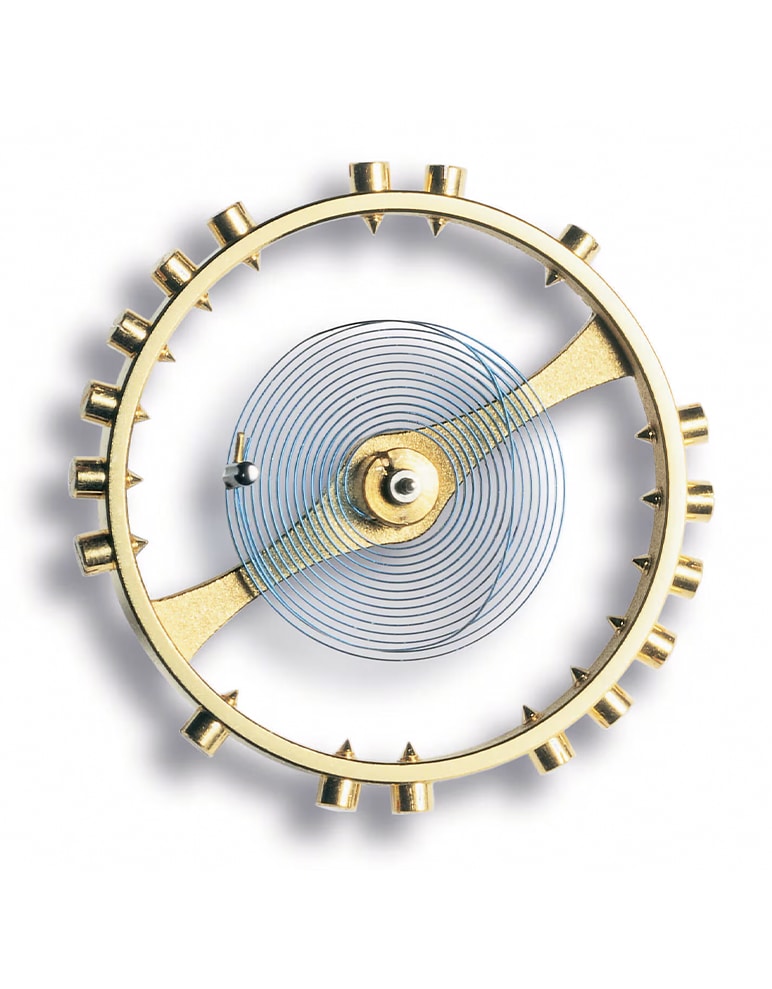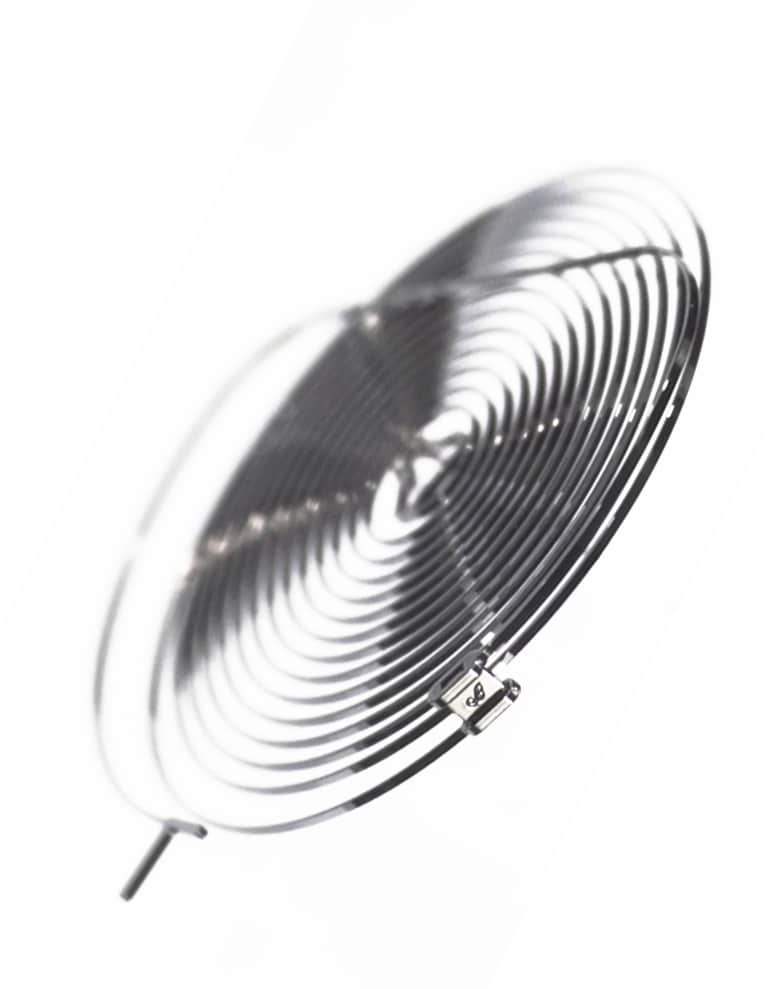Invention of the “Breguet balance-spring”
An improvement on the flat balance-spring, the balance-spring developed by A.-L. Breguet improved precision while slowing wear on the balance wheel axis. It can be recognised by the curve that brings its outer end inwards.

The balance-spring is a small spring which through its elasticity regulates the oscillations of the balance. It is attached at its inner extremity to the axis of the balance and at its outer extremity to the cock. The flat balance spring, invented by the Dutch mathematician Huygens in 1675, had established a degree of isochronism which still left something to be desired. The flat balance-spring was made of copper or iron and had only a few coils. Though imperfect, it gave the balance what it needed to become as accurate as the pendulum of a clock.
In 1795 Abraham-Louis Breguet solved the problem by upraising the spring’s last coil and reducing its curvature, to ensure the concentric development of the balance-spring.
Thus endowed with the "Breguet overcoil", the balance spring henceforth became concentric in form. Watches gained in precision, and the balance-staff erode less quickly. Breguet also perfected a bimetallic compensation bar in order to cancel out the effects of changes in temperature on the balance spring.
The breguet balance spring was adopted by all the great watchmaking firms, who continue to use it to this day for high precision pieces. Between 1880 and 1910, many manufacturers inscribed the words "Spiral Breguet" or "Breguet overcoil" in large letters on the cuvettes of their watches.
SILICON BALANCE-SPRING AND SILICON BREGUET OVERCOIL
In 2006, Breguet introduced its first wristwatches with silicon balance spring and escapement. It combines the advantages and qualities of the earlier experiments. Silicon also possesses advantages of its own.
Silicon is totally impervious to magnetic fields, lighter than metal and thus less prone to deformation caused by the pull of gravity. Silicon also provides far superior resistance to corrosion and is less vulnerable to shocks. Moreover, components fashioned from silicon are subjected to a special process that greatly improves their resistance to handling and shocks.
After several years of service in various watch movements, Breguet can report satisfactory results with flat silicon balance springs. The next step was to turn out silicon balance springs featuring the celebrated "Breguet" terminal curve.
Actually putting a curve into a sliver of silicon represented no mean exploit in the world of watchmaking. Getting silicon, devoid of the malleability of metal, to form a bend rising up from the coil required a complete rethinking of the production process, a technical challenge brilliantly mastered by Breguet technicians.
